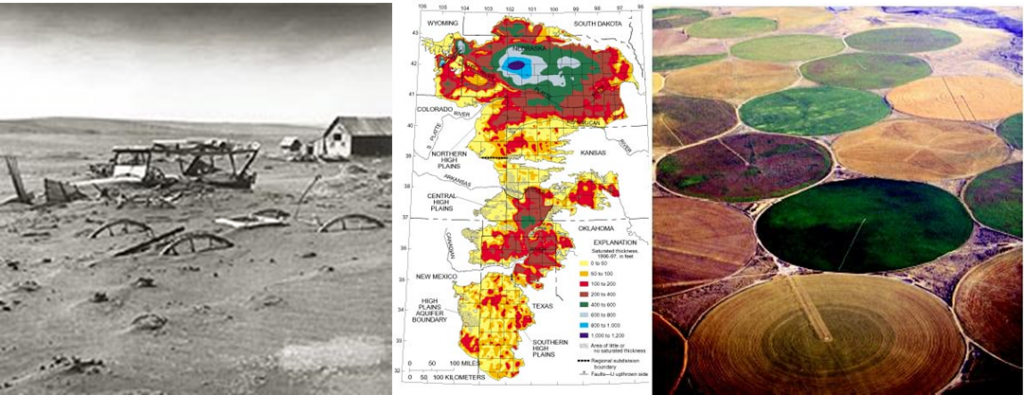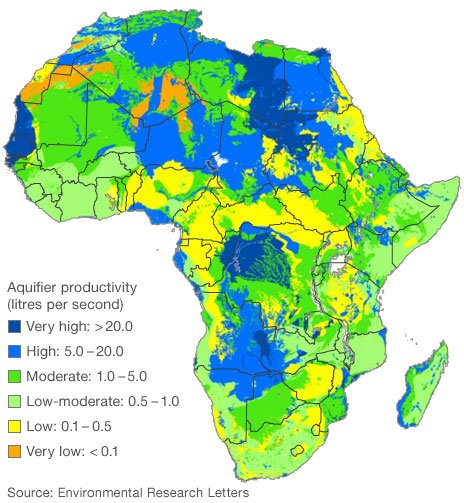Depending on what latest research paper you are reading or with whom you are talking we are either on the edge of a new water crisis or uncovering a wealth of underground water we never knew existed ushering in a new era in sustainable human development on this planet.
Let’s start with the evidence of a coming crisis.
Water Shortages from Groundwater Will Get Worse
That is the conclusion of researchers at McGill University, Montreal, Quebec, and Utrecht University, the Netherlands, who calculated current global water usage, measuring it against existing underground sources. Their study, released in the journal Nature, concluded that current consumption is 3.5 times larger than water in underground aquifers today and that 1.7 billion people, mostly Asia, were under threat as a result.
Growing Water Shortages in the U.S. Midwest
Underground water sources have been tapped by farmers in the United States Great Plains and the Central Valley of California for years. The Ogallala Aquifer in the U.S. Mid-West has shown significant depletion since the 1970s. These dry farming zones rely heavily on irrigation and in particular this year have experienced little in the way of rainfall. That means water is being heavily drawn from underground resources and there is a lot less of it to go around.
The map in the centre of the image below shows water level changes in the aquifer between 1980 and 1997. Today the aquifer is wrung dry in Texas and parts of Kansas. Where there remains a lot of water is in the area of the Nebraska Sandhills, the original proposed routing of the Keystone Oil Pipeline that has caused so much controversy. The reason the Nebraska resource remains untapped has more to do with the fact that crop irrigation is deemed uneconomic in the area.

How Much Water is Needed to Make a Cup of Coffee?
You may think this is a trick question. After all a cup is a cup. But it takes 140 liters (almost 37 gallons) to grow the beans. That number is consistent whether the beans are cultivated in East Africa, Jamaica or Colombia. But the 140 liters used in East Africa where there is far less rainfall has a much greater impact on water resources then the beans grown in the Colombian rainforest where precipitation is plentiful. It therefore becomes a moral question whether to grow coffee beans in East Africa where there are water shortages or rather to use the land to produce food staples to feed a growing population.
But Why Are There Water Shortages in Africa?
In April this year scientists writing in the journal, Environmental Research Letters, reported that Africa has underground aquifers with 1oo times the volume of water found on its surface. This is on a continent where 300 million Africans have little access to safe, clean drinking water. There is moderate to high amounts of underground water resources in East Africa (to keep those coffee beans growing) but currently these aquifers are not being exploited. And more surprising is the significant amount of subsurface water under much of the Sahara Desert, particularly in Morocco, Algeria, Libya, Egypt, Niger, Chad and the Sudan.

In the northern Sahara there is a band of water at least 75 meters (almost 250 feet) thick in sedimentary basins. How can Africa effectively exploit these underground assets without repeating what is happening in the United States with Ogallala? The key is to keep the scale of groundwater pumping reasonable to meet community and agricultural needs. That means selective drilling of bore holes and use of windmill and hand pumps to bring the water to the people of the continent. The biggest concern – are the reserves sufficient to deal with the vagaries of climate change? What will continuous pumping over several decades do? The researchers believe that based on their estimates, even in areas with little rainfall there is sufficient water underground to maintain existing populations for 20 to 70 years as long as extraction rates remain reasonable.
So the real question for Africa isn’t about shortages of available water. It’s about access to water resources that are directly beneath the surface. It’s about putting in place the low technology needed to get that water to the people and prevent disasters such as occurred in East Africa in the drought of 2005-6 when thousands of people died or were displaced.















